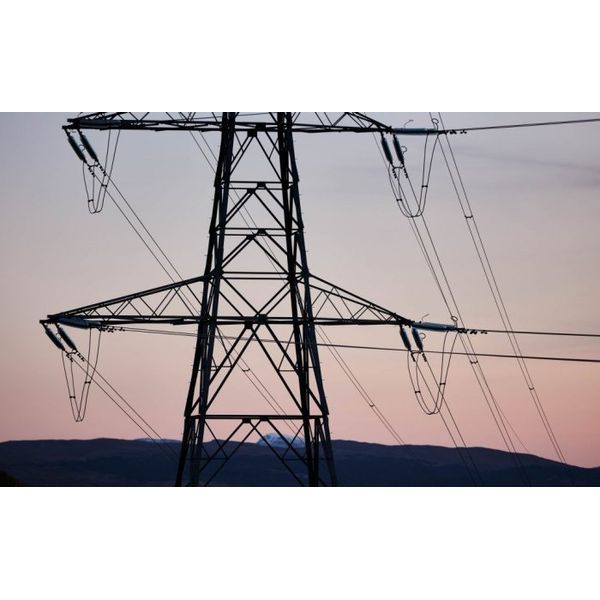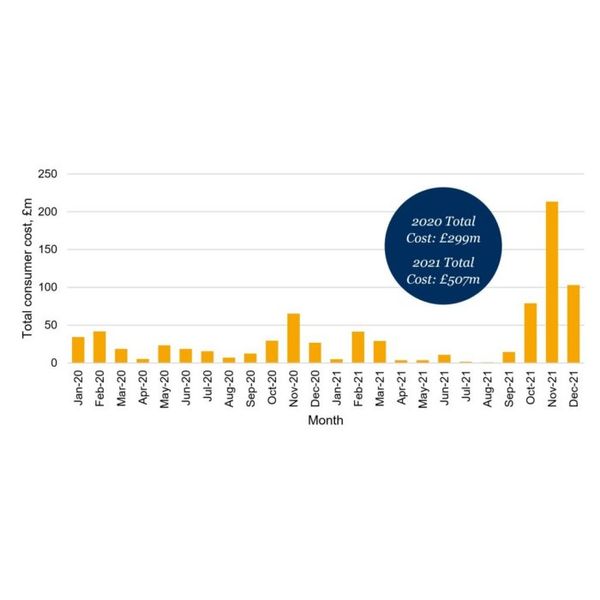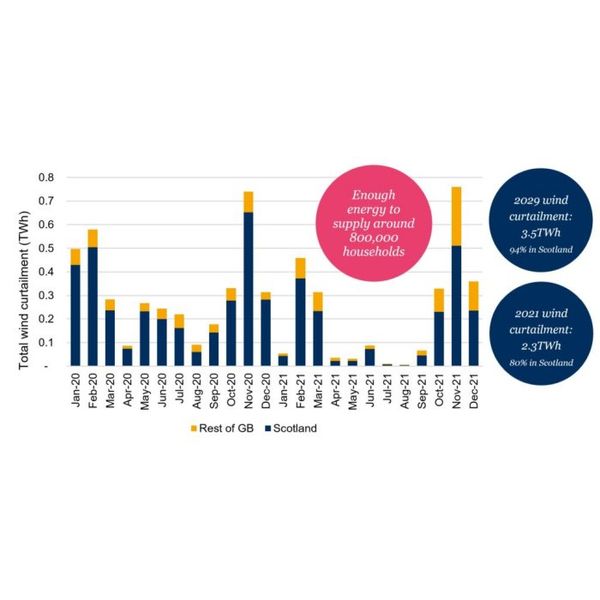

- Home
- Companies
- Drax Group
- News
- Cost of turning off UK wind farms ...
Cost of turning off UK wind farms reached record high in 2021
- Investing in more long duration electricity storage, such as expanding Drax’s Cruachan pumped storage hydro plant in Scotland, would mean more excess renewable power could be stored and made available when required, cutting costs and carbon emissions.
- The cost of turning off UK wind farms to manage the electricity system rose from almost £300m during 2020 to over £500m in 2021, contributing to higher energy bills and carbon emissions, according to a new report.
- Costs increased substantially because the system relied on expensive gas power to manage periods when wind power was curtailed, as not enough electricity storage was available to prevent the excess renewable power from wind farms going to waste.

The independent report by Lane Clark & Peacock (LCP), commissioned by renewable energy leader Drax, found that over the last two years curtailing wind power added £806m to energy bills in Britain. Rising gas prices made the practice more expensive, as gas power stations were increasingly used to support the system when wind power was curtailed.

Despite the growing need for more homegrown renewable power generation from wind farms to support energy security, enough renewable power to supply 800,000 UK homes went to waste in 2020 and 2021 as wind farms were routinely asked to switch off by the Electricity System Operator.

This happened as a result of constraints in the transmission system and a lack of long-duration storage capacity, which is needed to manage periods when renewable power generation outstrips demand.
Britain is a world leader in wind power with capacity increasing from 5.4GW in 2010 to 25.7GW in 2021 – wind turbines now have the capacity to provide enough renewable power for almost 20 million homes.
But without any new long-duration storage projects built for almost 40 years in the UK, the only way to manage the imbalance when generation outstrips demand and prevent damage to the electricity grid, is to curtail wind power – a practice which could be significantly reduced if more energy storage was available.
And with gas power stations overwhelmingly called upon to plug the gaps in supply when wind was constrained due to transmission issues, there was an environmental cost.
An extra two million tonnes of CO2 was emitted during 2020 and 2021 as a result of gas being used to replace curtailed wind power, equivalent to putting almost half a million more cars on Britain’s roads.
Drax Group’s purpose is to enable a zero carbon, lower cost energy future and in 2019 announced a world-leading ambition to be carbon negative by 2030, using Bioenergy with Carbon Capture and Storage (BECCS) technology.
Drax’s around 3,000 employees operate across three principal areas of activity – electricity generation, electricity sales to business customers and compressed wood pellet production and supply to third parties.
